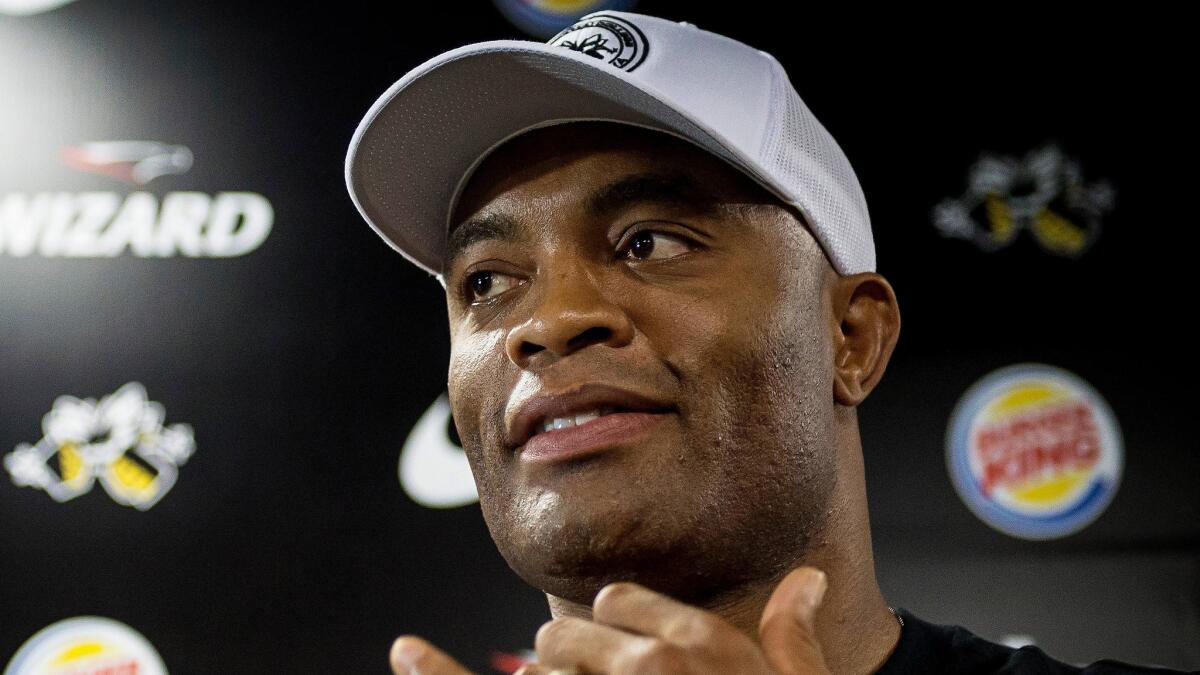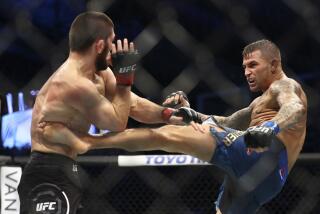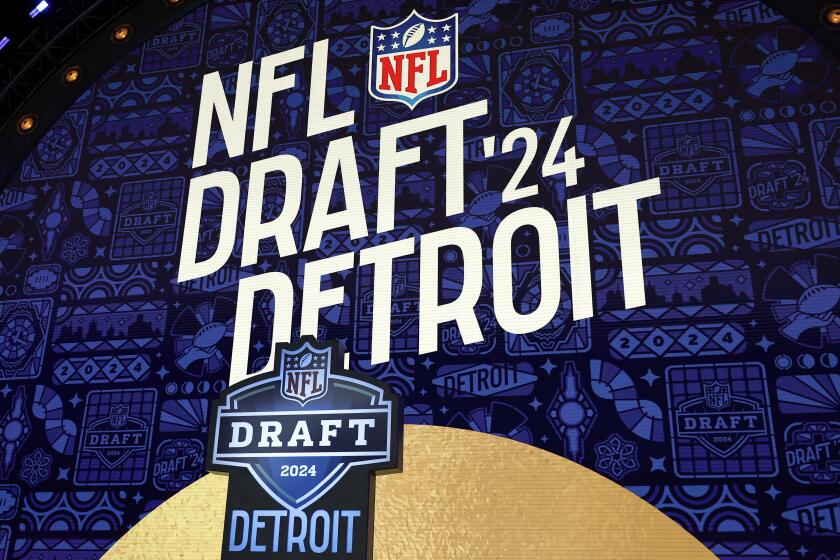Nevada commission head calls Anderson Silva cover-up talk ‘ludicrous’

Anderson Silva collected a guaranteed $800,000 for his Saturday night victory at UFC 183. The Ultimate Fighting Championship deposited $4.5 million in the bank from its live gate. And three days later, the Nevada State Athletic Commission announced Silva tested positive for two steroids.
From a urine test taken on Jan. 9 in Southern California.
As bad as it looks, the head of the commission Wednesday told the Los Angeles Times that it would be “ludicrous” to believe Silva’s positive test was concealed so the fight could proceed.
“To think for one second that we would consider that -- maybe it’s mother nature for some negative people to think that way -- it’s ludicrous,” said Bob Bennett, the Nevada State Athletic Commission executive director.
“I have 24 years in the FBI. To think someone could get me to close my eyes to a positive test, to risk someone getting hurt, that conspiracy theory is … we would never do that.”
UFC President Dana White lauded Silva in the following statement:
“Anderson Silva has been one of the greatest athletes this sport has ever seen. He has had a long and distinguished career in mixed martial arts. In his nine years with the UFC, Anderson has never tested positive for a banned substance. In light of this, we want to ensure that Anderson gets his due process and we will support him during this time. While this process plays out, Anderson will continue in his role as coach of The Ultimate Fighter Brazil. Of course we will continue to monitor the actions of the Nevada State Athletic Commission.
We fully support the Commission’s out-of-competition drug testing program, which we have financed when requested over the past two years. Testing of this nature is important to help keep the sport clean. The director at the laboratory in Salt Lake City has now explained the timing of Anderson’s test results and why the Commission and the UFC did not receive the results until February 3, after the fight.
Once all the results have been made public and the Nevada State Athletic Commission has rendered its decision, we will respect the process and move forward accordingly.”
Silva was tested on Jan. 9 in Southern California and his sample was analyzed by the Salt Lake City-based Sports Medicine Research and Testing Laboratory, but the report was not given to Nevada until Tuesday.
“It had been taking them about seven to 10 working days to get us back the results,” Bennett said of the World Anti-Doping Agency-accredited lab that has tested dozens of drug samples for the commission during the last year. “It should have been done in 10 days, [by Jan. 26, counting the Martin Luther King Jr. holiday]. But this one took 17 days. … You live and learn.”
Bennett said the commission will now demand that all samples sent to the lab be designated as “expedited,” an option available to all sporting bodies, but not taken in this case, said Dr. Daniel Eichner, the lab’s executive director/laboratory director.
“We don’t see names on a sample. We have no idea who we’re testing and no idea how they’re related to a specific event,” Eichner told The Times. “We can put a rush on it if the client asks, but we will never rush a report and I’m not going to apologize about that. We will always take our time to get it right.”
Eichner said the typical process takes nearly 10 working days -- the lab is open Monday through Friday -- and can be delayed by additional confirmation steps needed when prohibited substances are believed to be present.
Not only did Silva test positive for the anabolic steroid Drostanolone in his random test, he was caught with 5b-Androstane-3, 17-diol, another steroid.
Each substance “confirmation” takes about three days, Eichner said.
Eichner said Drostanolone is taken orally and is used in “building up muscle. It’s great for the recovery needed from heavy training or in the recovery from injury, to be able to train harder.”
Silva, whose reign as middleweight champion stretched from 2006-13, last fought in the UFC in December 2013, before the Nevada commission had aligned with the Utah lab, and he suffered a broken leg in a title loss to current middleweight champion Chris Weidman.
Ironically, after defeating Saturday opponent Nick Diaz -- who later submitted his third positive marijuana sample in Nevada in a post-fight test -- Silva jumped over the cage and said he delivered a pep talk to UFC light-heavyweight champion Jon Jones.
Last month, Jones was found positive for cocaine from a test taken Dec. 4, with a result not publicized until after his lucrative pay-per-view Jan. 3 bout, a unanimous decision over Daniel Cormier.
Because cocaine found in an out-of-competition test doesn’t warrant a suspension under the World Anti-Doping Agency Code, Jones was allowed to fight and was later fined $25,000 by the UFC for a code-of-conduct violation.
Francisco Aguilar, the chairman of the Nevada commission, said the postponed results are regrettable, especially since Silva’s should have stopped the fight.
Bennett said the UFC pays for additional drug testing that the Nevada commission performs, including the test that nabbed Silva, clarifying that only the commission is notified of a positive result by the lab.
“There are going to be challenges in drug testing,” Aguilar said. “It’s what you do after you face those challenges. We’ve had some before and come back better. Our goal is to help make a fair fight for every fighter who steps into that octagon. We can’t lose focus on that.”
Twitter: @latimespugmire
More to Read
Get our high school sports newsletter
Prep Rally is devoted to the SoCal high school sports experience, bringing you scores, stories and a behind-the-scenes look at what makes prep sports so popular.
You may occasionally receive promotional content from the Los Angeles Times.







